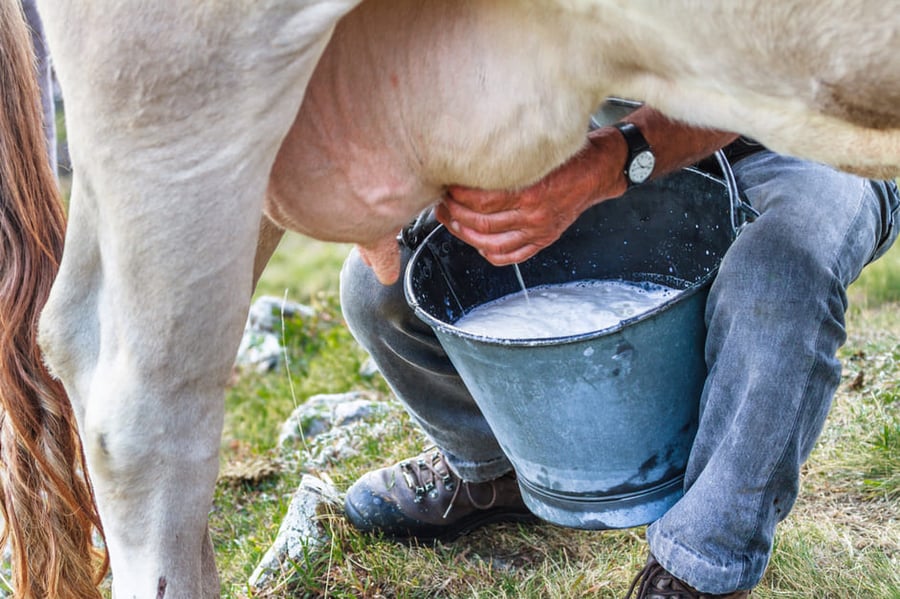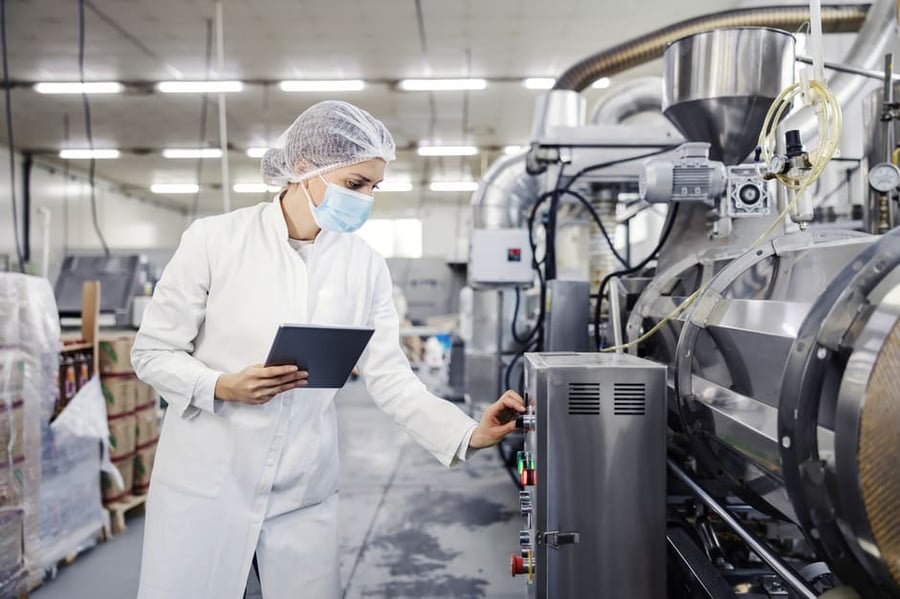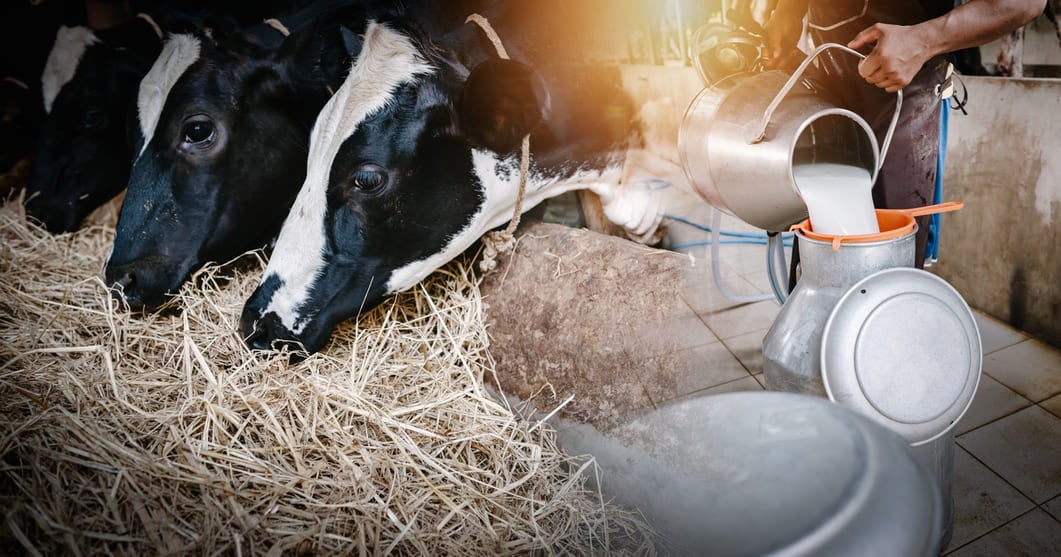There is possibly nothing more nerve-wracking for dairy farmers than to calculate all milk costs and revenues from their production activities. However, it is important to acknowledge that dairy farmers should be able to maintain records and control economics to avoid financial slippage as much as possible. If needed, help from specialised consultants should be considered to determine full economic outputs to inputs, and to precisely calculate the cost of producing one litre of milk.

Doing the maths
To determine total milk costs, one must consider all expenses related to dairy activities, namely variable and fixed costs. The exercise should also include a financial slack, to accommodate for unforeseen expenses. In the last three years the “unforeseen” has taken a new definition after the CoVid-19 pandemic and later the Ukrainian war, that have put the farming sector in general under huge pressure. This led, from 2019 to 2021, to an increase of production costs of about 9% (0.034 cents/kg)2, and they continue to rise. In the last year, the Ukraine war has led to an even higher pressure on fertilisers and feed, specially in the EU area leading to increased difficulties for dairy farmers to continue their activity.

Types of costs
As we referred, costs can be fixed or variable. Fixed costs include expenses that won’t vary according to dairy activities. These generally include bank payments, rents, taxes and insurances. Variable costs, on the other hand, vary according to herd size, management strategies, and milk production, and usually include feed (either purchased, homegrown or grazed), veterinary assistance and consumables, bedding and litter, fuel and electricity, repairs, hired labour, capital recovery of machinery and equipments, taxes, insurance and opportunity costs for unpaid labour and land.3,4 Feed is the most significant cost, as it may represent 40 to 60% of the total costs in a dairy farm5. However, it is also unavoidable and thus, to aim for efficiency, one of the most important strategies is to optimise dairy cow nutrition by maximising milk production and quality, as well as animal health, using the least expensive diet.
Understanding types of costs (variable vs. fixed) allows the farmer to anticipate impacts of certain changes in management. To set an example, increasing herd size will allow cash in more money due to more litres of milk produced. And even though this allows for the reduction of fixed costs, variable costs will inevitably increase (feed, labour, veterinary assistance). On the other hand, investing in new equipment or structures (such as automated milking systems) will generally increase fixed costs but may decrease variable costs if the outcome is, for example, more milk produced per feed consumed (higher feed efficiency).

So what is the cost of producing one litre of milk?
The cost of producing milk can vary depending on various factors such as the country, region, production methods, economies of scale, labour costs, feed costs, and other factors.
The European milk Board2 regularly publishes the “study on the cost of milk production in Europe”, this publication from the BAL (Farm Economics and Rural Studies Office, Germany) calculates milk production costs throughout the participating countries: Germany, France, Netherlands, Belgium, Denmark, Ireland, Lithuania and Luxembourg, and It is based primarily on data provided by the European Commission’s Farm Accountancy Data Network (FADN). In Table 1 you can find the summary of the latest data available (2021).
|
|
Germany |
France |
Netherlands |
Belgium |
Denmark |
Ireland |
Lithuania |
Luxembourg |
EU AVERAGE* |
|
Milk price revenue (€/kg) |
0.36 |
0.38 |
0.34 |
0.37 |
0.38 |
0.37 |
0.34 |
0.37 |
0.37 |
|
Milk production costs (€/kg) |
0.45 |
0.53 |
0.48 |
0.47 |
0.41 |
0.36 |
0.59 |
0.47 |
0.48 |
|
Cost increase since 2019 (€/kg) |
- |
0.02 |
0.04 |
0.03 |
0.03 |
0.03 |
0.06 |
0.03 |
0.03 |
|
Cost increase since 2019 (%) |
0 |
5 |
9 |
6 |
6 |
11 |
17 |
7 |
9 |
|
Overall cost coverage 2021 (%) |
80 |
71 |
70 |
79 |
88 |
- |
57 |
79 |
77 |
|
Income generated from milk price + CAP payments (€/kg) |
0,03 |
0.02 |
-0.05 |
0.07 |
- 0.01 |
- |
0.01 |
0.02 |
0.02 |
*The results for the EU average refer to 27 EU Member States, without the United Kingdom.
In 2021, producing milk costs in the EU amounted to 0.48 € per kilogram, with only 77% of the costs covered by the milk price revenue. In this particular year European milk producers generated an income of only 0.02 €/kg from the milk price and CAP payments.
A key takeaway of this study was that improved farm-gate milk prices are the most important adjustment to be made for milk producers to proceed with the necessary alignments and implement the expenditure and investment for climate and environment protection as well as animal welfare.
In conclusion
The cost of producing one litre of milk is quite variable among farms since fixed and variable costs are different, depending on management strategies, local policies and unforeseen events. Solely calculating total costs or total milk income, without determining profit margins and efficiency, may not be enough to monitor financial health and farm sustainability.
Also, to be taken into account are the environmental costs and incomes. The new CAP eco-schemes can provide funding for environmentally beneficial practices, and to promote ecosystem services from farming.
References
1. AHDB. 2023. Estimated milk production costs. Agriculture and Horticulture Development Board. Accessed in February 8th 2023 https://ahdb.org.uk/estimated-milk-production-costs
2. EMB. Study on the cost of milk production in Europe. European milk Board, 2021. https://www.europeanmilkboard.org/milk-production-costs.html
3. ERS USDA. 2022. Milk Cost of Production Estimates. Economic Research Service, U.S. Department of Agriculture. Accessed in January 10th 2023. https://www.ers.usda.gov/data-products/milk-cost-of-production-estimates/
4. Pepin, Randy. 2009. Managing Dairy Production Costs and Ratios. The Dairy Site. Accessed in January 12th 2023. https://www.thedairysite.com/articles/1924/managing-dairy-production-costs-and-ratios
5. Connor EE. Invited review: improving feed efficiency in dairy production: challenges and possibilities. Animal. 2015;9(3):395-408.
6. Ofileanu D, Bumbescu SS. The Analysis of the Factors Which Influence the Change of the Breakeven Point. Procedia Economics and Finance. 2014;16:356-67.
7. Buza MH, Holden LA, White RA, Ishler VA. Evaluating the effect of ration composition on income over feed cost and milk yield. J Dairy Sci. 2014;97(5):3073-80.



Leave your comments here